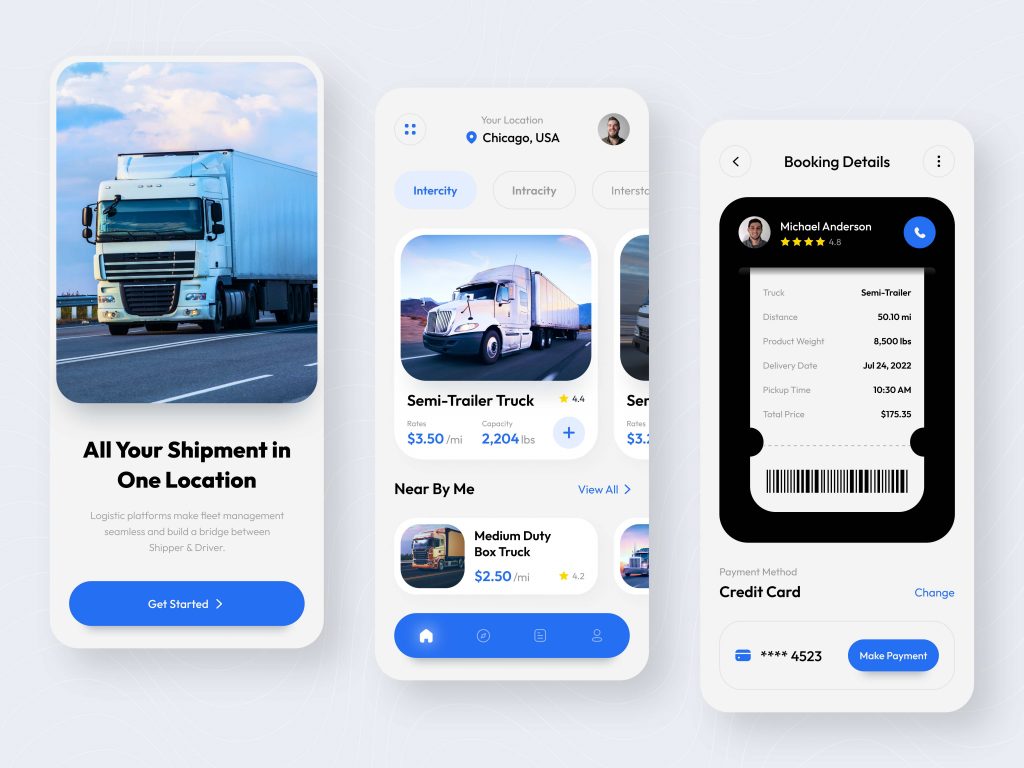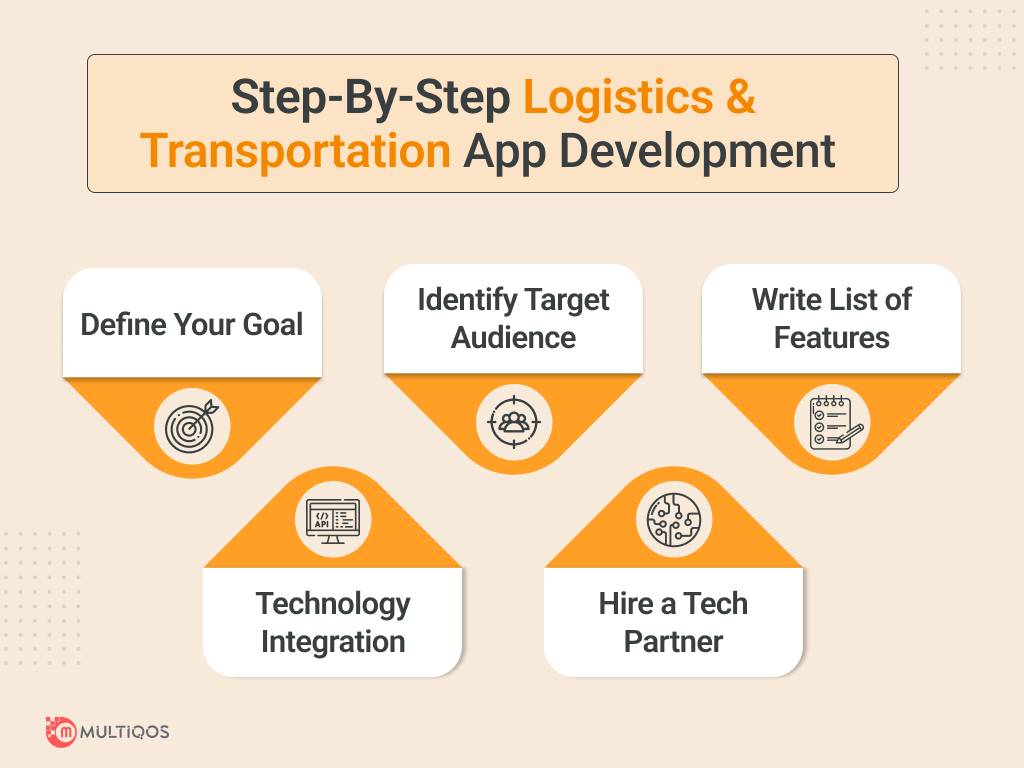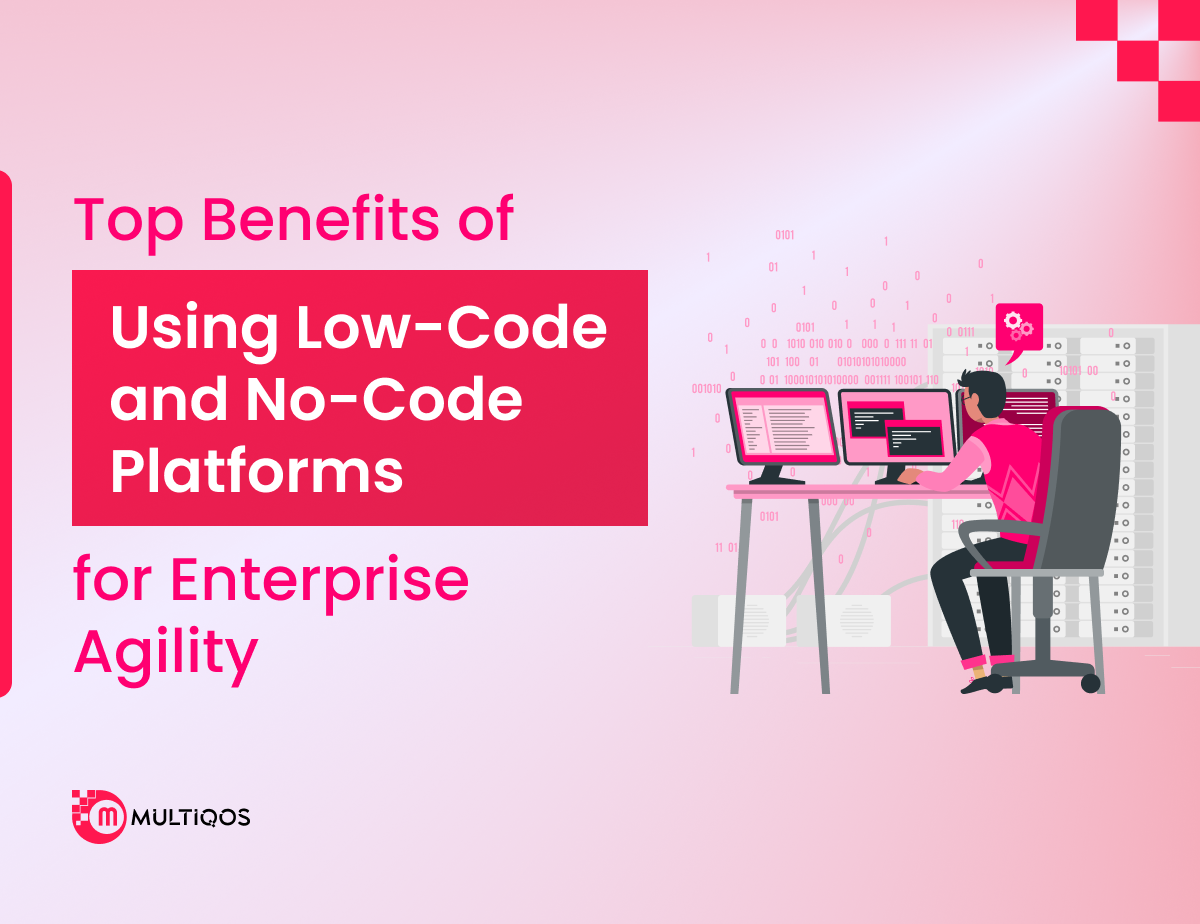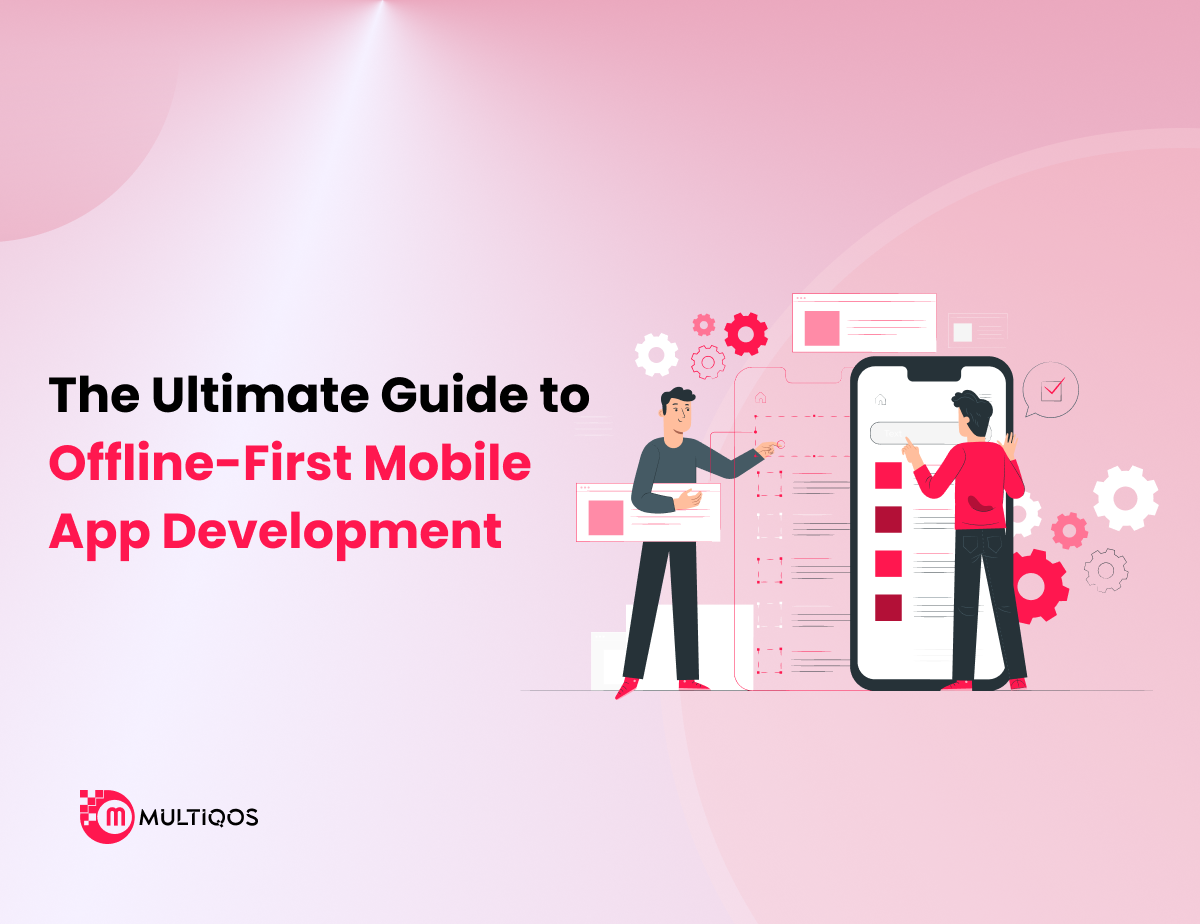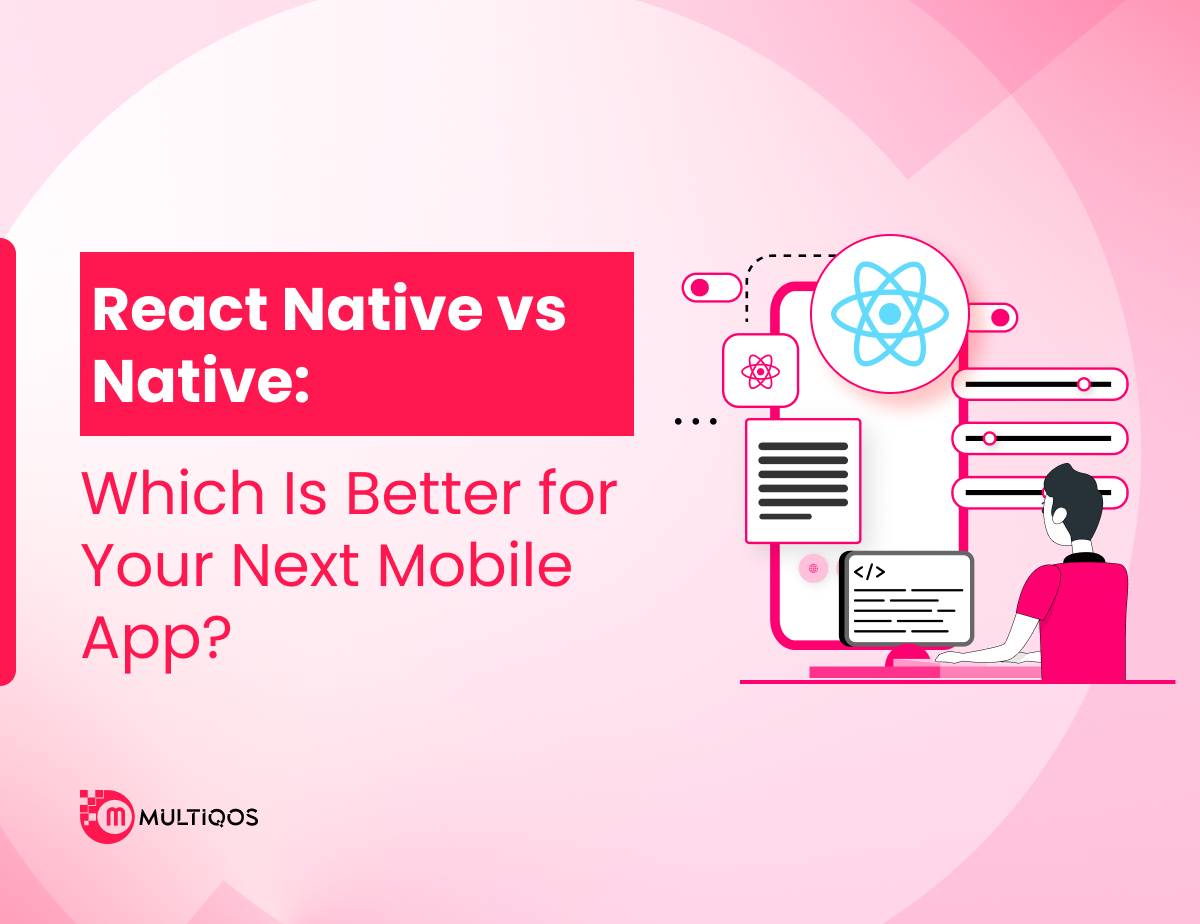A Complete Guide on Logistics & Transportation App Development

Table of Contents
- Overview
- Market Statistics
- About Logistics & Transportation Mobile App
- Types of Transportation & Logistics Mobile App
- Key Features of Logistics and Transportation App
- On-Demand Logistics App: Revenue Generation
- How to Develop a Logistics App for Your Businesses?
- Our Expertise in Logistics & Transportation App Development
- Wrapping Up!
- FAQ
Overview
Due to digitization, mobile apps have become essential to our daily lives. Everything from ordering your favorite meal to booking a cab can be delivered to your door.
Isn’t it convenient?
Because of their accessibility, simplicity, time savings, and convenience, many businesses have begun to use freelance labor, and the transportation industry is no exception.
Nearly a decade ago, this industry was plagued by numerous issues such as poor time management, paperwork, manual intervention, and so on. However, the emergence of logistics and transportation app development has taken the industry by storm and now provides numerous benefits that businesses had anticipated ten years ago. Let’s explore how:
Market Statistics: Transport and Logistics Industry
The transportation and logistics industry is widely regarded as the backbone of the global economy. Germany leads the pack of leading logistics markets in 2018 with an index score of 4.19. It was based on the LPI, or Logistics Performance Index, which measures trade logistics performance on the ground. Such high figures indicate an increase in the demand for on-demand logistics app development solutions and services in the transportation and logistics industry.
Because of the massive hit that all industries took as a result of the pandemic, the transport and logistics industry experienced a sudden drop in size in 2020. However, by 2024, the industry is expected to increase numbers significantly.
Working of a Logistics & Transportation Mobile App
Businesses can use these logistic apps to perform real-time monitoring, fleet tracking, shipment management, analysis, and transportation management. Let’s go over how this logistics and transportation app work:
- Shippers initiate a freight request, which includes cost, weight, destination, size, load, origin, and destination information.
- The drivers are notified of the shipper’s request and can provide immediate services once approved for logistic shipment.
- The driver then picks up the freight; with the built-in GPS functionality, tracking is possible with real-time vehicle location updates.
- When the cargo is delivered, the shipper is notified of the completion of the delivery, and an invoice is generated for the same.
Types of Transportation & Logistics Mobile App Solutions
Transportation, inventory, warehousing, and truck management are all part of the logistics domain, each with its own set of requirements. As a result, it’s not surprising that there are numerous transportation and logistics apps. To make things feasible for you, we’ve selected the most important app solutions:
Fleet Management:
This app collects fleet-related data and displays vehicle locations in real-time. This one-stop mobile app solution allows you to manage the fleet.
On-Demand Logistics:
Because of this app, your clients can use your logistics and transportation services whenever they want. It allows you to register orders 24 hours a day, seven days a week.
Warehouse Management:
The warehouse is an important part of the transportation business. The warehouse management app is intended to simplify storage and the overall warehouse-related process.
Tracking and Monitoring:
This app allows you to monitor and track the driver’s movements while providing information about the route. It is beneficial to receive real-time location updates.
Pro Tip: These features can also be combined into a single app
Source: Cargo Transportation App Design
Basic Features of Logistics and Transportation App
When you hire a logistics app development company, you will receive a complete solution with various panels such as Admin, Users, and so on. Let’s take a closer look at them while discussing the logistics app’s must-have features.
Users Panel
Creation of a Profile:
After downloading the mobile logistics and transportation app, users’ first and most important step is registering and creating a profile. Users can sign in with their existing Gmail and social media accounts or create new accounts.
Search Nearby Vehicles Available for Transportation:
Users can now search for nearby vehicles available for transportation.
Choose a Vehicle:
These features allow your customers to select the ideal vehicle from the available options. However, the consignment size for delivery simplifies the entire process. To reduce confusion and allow new customers to use the logistics app smoothly, provide correct information to them step by step.
Schedule and Manage Bookings:
Users can schedule bookings based on their needs and interests. They can then manage the booking according to the date/time, or it can be rescheduled. Furthermore, the user can pre-book by specifying the pickup date/time and location.
Driver Panel
Login:
The driver must first sign into the logistics app. The driver can, however, sign up using their existing email address or social media accounts. Logistics app developers should ensure that the login process is simple and easy to use.
Profile Management:
It is one of the most useful features because it allows drivers to update the information on their profiles. It is occasionally necessary for the driver to update their profile statuses, such as changing addresses, license details, or other information.
In-App Communication with Customers:
We have in-app chat/calling functionality for either sharing or avoiding contact information. These logistics and transportation app development features will assist drivers who cannot locate a customer’s correct address.
Accept/Reject Pickup Requests:
This feature allows drivers to accept or reject any pickup request or order based on their preferences.
Admin Panel
Dashboard:
This is an important screen where an administrator can keep track of all logistics app development activities. The admin is very important in the logistics mobile app development. It does, however, keep all records of drivers and customers. Admin is in charge of the entire app, including pending orders, completed orders, and so on.
Manage Vehicle Trucks and Shippers:
The vehicle transporters and all additional costs incurred while making deliveries are managed and stored.
Fleet Management:
Fleet management is the best logistics app development improvement feature. It allows the administrator to see the current location of their fleet. However, it can assist the administrator in directing a driver to the shortest possible routes. With the assistance of fleet management, one can easily connect with the drivers via the application, eliminating the need for phone calls.
Manage Billing and Invoice:
The admin can generate and update invoices using the manage billing and invoice features. However, the administrator is only mentioned briefly in the application. Admin also manages payment by approving the driver’s payment and reviewing the other transactions.
How Does an On-Demand Logistics App Development Generates Revenue?
People are moving to online platforms due to the high demand for digitized business solutions. This strategy or module not only helps businesses grow but also provides them with multiple revenue streams.
The following are some of the ways app owners with logistics app development services can earn revenue to increase profits:
Paid Applications
The app generates revenue because the user pays a set fee to obtain a lifetime license to use the app.
Advertisements
When people use the app for free, it is a great revenue source because the app can make huge dollars by displaying advertisements in between.
Commission
The easiest way to earn money with this app is through commissions. The app owner charges a fixed commission to get the drivers listed on the platform. As a result, it helps both the app owner and the drivers earn money.
Paymium Business Model
If the app has a strong USP, the owner can make a lot of money because users must pay to download the app.
Freemium Business Model
Apps frequently use this monetization model, providing some basic features for free but requires users to pay a premium fee for advanced features. As a result, the app owner gains a revenue stream.
How to Develop a Logistics App for Your Businesses?
Following the proper steps and executing each step perfectly is required to ensure smooth and effective logistics & transportation app development. The seven steps outlined below will help you in developing an ideal application, provided you meet the requirements of each step:
Step 1: Determine the Logistics App Type
As logistics encompasses several departments, logistics apps differ in purpose, end-users, and feature set. At this stage, you must decide which type of app you will create and choose one of the following:
- Fleet Management Mobile Apps
- Logistics On-Demand Mobile Apps
- Warehouse Mobile Apps
Step 2: Request a Quote from Logistics Mobile App Developers
Your goal is to consider technical expertise and communication between the team and yourself as the client. But what difference does it make? While there are numerous good logistics app developers, the project’s success depends on effective communication among team members, which requires soft skills.
Where to Look for the Best Mobile App Developers:
- Platforms for client reviews, such as Clutch or GoodFirms
- Professional social media networks such as Linkedin, and
- Technical blogs where industry leaders share useful hints with their clients
Once you’ve decided on the best logistics app developers, you’ll need to contact their sales representatives, usually through the website’s contact form.
Step 3: Sign an NDA and Explain Your Business Concept
Once your request has been responded to, a sales manager will contact you to discuss the project further. But there is no need to share all of your logistic app’s details with people who aren’t yet your technological partners. As a result, a sales manager who values your business idea will send you an NDA (Non-disclosure agreement).
However, if you have a tight deadline, ask to sign an NDA before the first call. Tell the sales manager about the on-demand logistics app development, including its features, users, and so on. The sales manager will forward this information to business analysts, who will make an estimated guess about the costs of your app.
Step 4: Get a Rough App Estimate
Because there are many technical details and requirements to be clarified, a rough estimate of the app’s cost is not your project’s final cost. As a result, avoid companies that claim to be able to develop a comprehensive logistics app for a ridiculously low cost.
Choose your winner by comparing rough estimates from mobile app developers, including timeframes, technologies, team composition, and hourly rate.
Step 5: Launch the Phase of Discovery (Inception)
The discovery or inception phase can last between one and three months. During this time, your logistics software development company will ask questions about the app’s business logic, functions, end-users, and how they interact with the app in order to create a project specification.
The prototype of an app is another deliverable from the discovery phase. The prototype is an interactive design comprised of several screens depicting the main app’s design elements. You can try out our app prototype by following the link.
After the discovery phase, the team will demonstrate the app’s prototype, send you the project specification, prototype, and final estimate, and await your feedback.
Step 6: Create and Launch the MVP of Your Logistic App
The mobile app development company in USA team will create an app MVP before developing the feature-rich app (minimum variable product). The MVP is a version of the app that includes only the features needed to prove your business idea. To create an MVP, the development team will do the following:
- Create an app MVP development strategy
- Start the development phase
- Release the app’s MVP on marketplaces
Step 7: Provide Advanced Features to the Logistics App
After receiving feedback from app users, you and your development team will decide what advanced features to build next. Consider including advanced logistics app features such as:
- Digitized documentation
- Build-in messaging
- Digital gallery with freight images
- Changeable shipping order status
- History of completed shipments and alike.
MultiQoS Expertise in Logistics & Transportation App Development
MultiQoS has a strong background in logistics and transportation app development. In addition to being experts in on-demand app development solutions along with the technologies, we are also well-versed in the transportation and logistics market. This will enable us to assist you in defining your company’s requirements and begin implementation immediately.
Here are some of our most recent logistics projects:
Development of a Logistics Tracking App:
The client required truck management app development specialists. They wanted us to create a solution for logistics brokers that would allow them to accurately track the number of hours drivers worked. The solution was completed in 3 months, and the client received funding for future development.
Improving a Web-Based Shipping Platform:
An unfinished product was delivered to us by a shipping solutions provider. We performed an extensive audit (which revealed numerous bugs from the previous vendor), fixed the bugs, and completed the development. Within two months, the solution was put into production.
Wrapping Up!
Building an application for the transportation and logistics industry is a great idea that can generate revenue if the right solution is built and implemented. A few things to keep in mind when developing an on-demand transportation app are that it should be simple, intuitive, and responsive.
Make sure to collect customer feedback and make necessary changes to meet their requests. In a scenario where 77% of customers will abandon it without hesitation, you must create the best possible product while reducing the chances of abandonment.
So, plan out the entire logistics and transportation app development process and go through each step in detail as you proceed with the appropriate channels.
Let’s Create Big Stories Together
Mobile is in our nerves. We don’t just build apps, we create brand. Choosing us will be your best decision.
FAQ on Logistics and Transportation App Development
By learning everything about your brand, your target audience, your KPIs, and your back-office dependencies, we set out to create tactful digital.By learning everything about your brand, your target audience, your KPIs, and your back-office dependencies, we set out to create tactful digital.
By learning everything about your brand, your target audience, your KPIs, and your back-office dependencies, we set out to create tactful digital.By learning everything about your brand, your target audience, your KPIs, and your back-office dependencies, we set out to create tactful digital.
By learning everything about your brand, your target audience, your KPIs, and your back-office dependencies, we set out to create tactful digital.By learning everything about your brand, your target audience, your KPIs, and your back-office dependencies, we set out to create tactful digital.
Get In Touch

